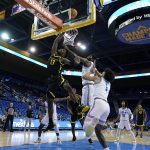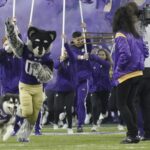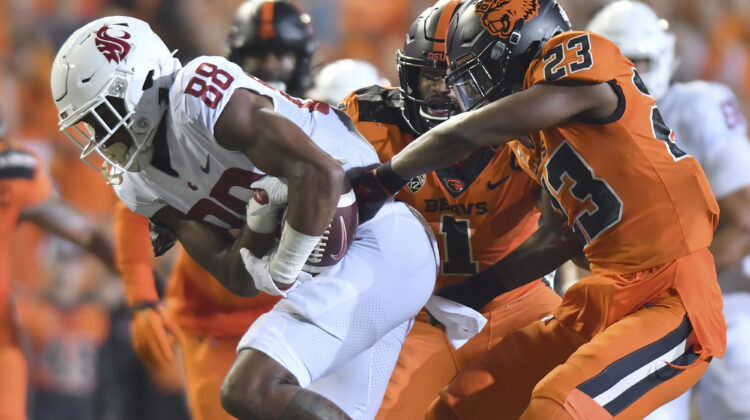Washington State and Oregon State were given control of the conference’s governing board Friday through a momentous display of inaction by the Washington Supreme Court.
The justices declined to review a lower court’s preliminary injunction that established WSU and OSU as the only board members and lifted a stay that was preventing the two schools from taking action to secure the future of the conference.
“As of right now,” a source said after the ruling from Olympia, “there are two board members in the Pac-12.”
What’s next for the Cougars and Beavers after their groundbreaking victory?
How will they treat the outbound schools?
Is there a reasonable legal recourse for the 10 departing members?
How will the conference’s revenue and assets be distributed?
Let’s dive in …
— Deafening silence
Admittedly, the high court’s decision came as a surprise to the Hotline given the rulings on previous motions and the significance of the case to the state’s two major universities.
We fully expected the justices to review the preliminary injunction themselves or send the case to an appellate court.
Sources for the plaintiffs expected a review, as well.
And so, it appears, did the defendants.
The outbound schools had been quick to issue joint statements at nearly every stage of this three-month saga, including a self-serving pronouncement following the reveal of a football scheduling agreement between WSU, OSU and the Mountain West.
But Friday afternoon, the 10 defendants offered nothing but radio silence.
Days later, they still have not uttered a public peep.
— Courtroom blowout
As we have addressed previously, Washington State and Oregon State had the vastly stronger case — one built on real-world precedent.
USC and UCLA were removed from the Pac-12 board after announcing their deal with the Big Ten in June 2022. Colorado met the same fate upon declaring its allegiance to the Big 12 in July 2023.
And as the Hotline first reported, Pac-12 commissioner George Kliavkoff himself confirmed the removal of the L.A. schools from the board in sworn statements in other lawsuits.
It wasn’t until 10 schools had left that Kliavkoff reversed course and attempted to call a September board meeting of all 12 presidents and chancellors — the fateful move that forced WSU and OSU to take the conference to court. (Three months later, Kliavkoff has still not offered an explanation.)
Meanwhile, the 10 defendants based their legal argument on parsing the phrase “notice of withdrawal” beyond the laws of Merriam, Webster and common sense.
When a university president (Washington’s Ana Mari Cauce) holds a press conference to discuss her school’s move into the Big Ten, she has given notice.
When the football team (Arizona) publishes its Big 12 schedule for 2024, it has given notice.
From the first legal filing to the last, this was an evidentiary wipeout. And the attorneys for the plaintiffs pounced on the opportunity presented.
— Democracy or dictatorship?
Following the high court’s ruling Friday, fans of the departing schools wondered if WSU and OSU would use sole control of the board to hoard the Pac-12’s expected $420 million in revenue for the 2023-24 competition year.
The schools smartly have not divulged their plans, but the Hotline would be surprised if they acted in authoritarian fashion.
One reason: They have been warned against that tactic.
Upon granting his preliminary injunction last month, Whitman County (Wash.) Superior Court Judge Gary Libey was clear in his expectation that WSU and OSU act in a reasonable manner.
“This is not a shutout,” he said at the time. “The (preliminary injunction) is going to be modified to make sure the other 10 are still treated in a fair manner … Nobody’s going to take advantage of somebody else.”
The notion that WSU and OSU would divide $420 million by two never squared with their strategic intentions or the legal reality.
The outbound 10 would seek a temporary restraining order immediately, and the very last thing WSU and OSU want is a return to court.
— The core issue
The heart of the dispute isn’t about distribution of revenue; it’s about using revenue as a vehicle for covering liabilities.
As a named defendant in a billion-dollar antitrust lawsuit against the NCAA, the Pac-12 could be on the hook for massive damages starting in 2025 — after the 10 schools have left the conference.
WSU and OSU are concerned that, absent a plan to cover the damages, they alone would be liable in a ‘Pac-2’ configuration.
There are other liabilities, including Kliavkoff’s contract and a wrongful termination lawsuit filed by two former employees. But those are mere inconveniences compared to the antitrust case.
The Cougars and Beavers want a legally binding plan to handle the looming damages. That plan could include a requirement that all 12 schools forfeit a portion of their 2023-24 revenue.
— Scorched earth?
The next step for the defendants is unclear.
Certainly, the outgoing schools will be interested in learning the specifics of whatever plan the Cougars and Beavers have crafted to divide revenues and handle liabilities.
Perhaps they will ask an appellate court in Washington to review the case, although the likelihood of success seems low after the state’s highest court declined.
Maybe one of the outbound schools will seek a temporary restraining order against WSU and OSU in its own state.
Or perhaps the defendants take a scorched-earth approach and try to dissolve the conference. Although that seems unrealistic given the composition of the governing board, an attorney raised the issue of dissolution last month.
However, the Hotline has always considered a settlement to be the most likely outcome, and the latest development simply reinforces that view.
Find a revenue figure that works for the outbound schools, sock away enough for WSU and OSU to cover the secondary liabilities and, above all, find a legal framework for dealing with the potential damages in the antitrust case against the NCAA.
This process took longer than necessary and cost the schools plenty in legal fees. But now that the ‘Pac-2’ schools are in control, the end should come swiftly.
Get it settled, folks, and move on.
*** Send suggestions, comments and tips (confidentiality guaranteed) to pac12hotline@bayareanewsgroup.
*** Follow me on Twitter: @WilnerHotline
*** Pac-12 Hotline is not endorsed or sponsored by the Pac-12 Conference, and the views expressed herein do not necessarily reflect the views of the Conference.
Related posts:

(AP Photo/Ashley Landis)
Pac-12 Hoop Power Rankings – Oregon in Position for Tournament Bid
Harry, the Washington Huskies mascot. (AP Photo/Ted S. Warren)
CFP rankings: Washington gains, Utah fades as Pac-12 places four teams in the committee’s top-25 Wilner – Vision for the future of Pac-12 football: It’s 2033, and the conference has reformed with the old guard
Wilner – Vision for the future of Pac-12 football: It’s 2033, and the conference has reformed with the old guard 
(AP Photo/Ralph Freso, File)
Pac-12 legal saga: WSU, OSU take control of governing board after Washington’s high court declines to review case
